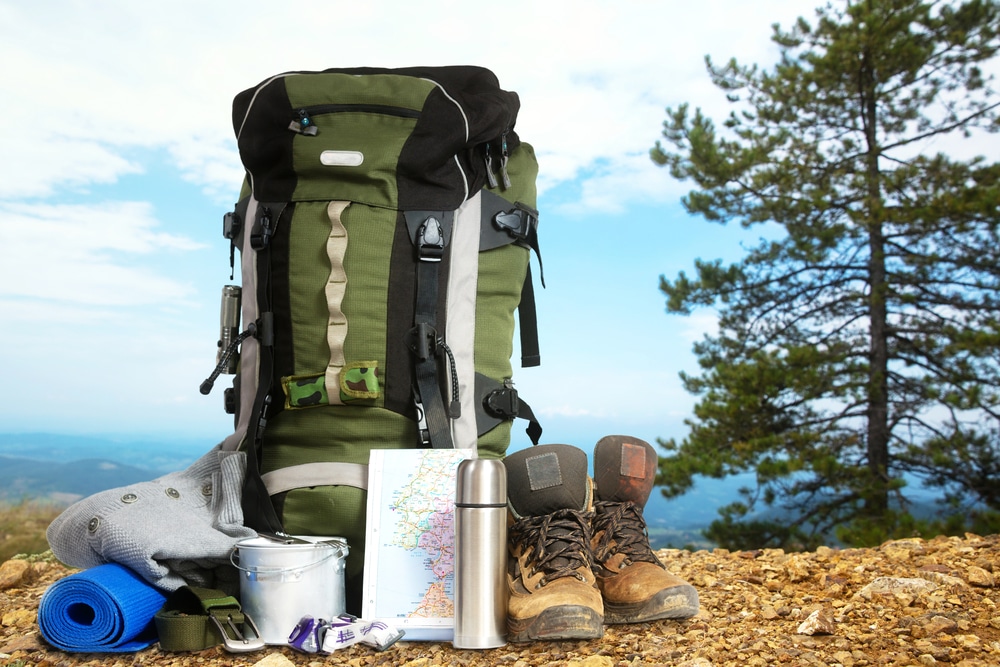Table of Contents
It is crucial to measure the backpack’s dimensions and volume to organize it for extended excursions. Therefore, accurately measuring a backpack meets your requirements for daily use, vacation, or hiking. Accurate measuring ensures the perfect organization of essentials and goods. Understanding the capacity measurements and the right approach for calculating the size will facilitate making the right decision. This guide will discuss different approaches to measuring a backpack. If you want to make your own DIY backpack, follow this step-by-step guide.
Determining the Volume of a Backpack

Determining a backpack’s volume is essential for understanding its capacity. The volume is typically measured in liters but can also be expressed in cubic inches. A typical hiking backpack has a volume of about 4,000 cubic inches or 65 liters.
Calculating the Volume
To calculate the volume of a backpack, you can use the dimensions of the main compartment. Measure the length, width, and Height using a flexible tape measure. The following formula can be used to get the volume in cubic inches:
- Length × Width × Height = Volume.
Example
For instance, the computation would be as follows if your backpack is 20 inches long, 12 inches wide, and 10 inches tall.
- 20 x 12 x 10 = 2,400 cubic inches
Since one liter is equal to 61.02 cubic inches, divide the cubic inches by 61.02 to convert them to liters:
- 2,400 cubic inches÷61.02≈39.3 liters
Using a Calculator to Determine Volume Capacity

Online calculators are available to help you determine the volume capacity of your backpack. These digital calculators are straightforward to use. Input the dimensions, and the calculator will do the rest for you.
Measuring the Dimensions of a Backpack
Accurate dimension measurement is essential for how to measure a backpack for carry-on or travel. Use a tape measure for precise results. Here’s how to take an exact measurement of the dimensions.
Length
Calculate the distance between the backpack’s lowest and tallest point.
Width
Please measure the width of the bag at its broadest point across the front.
Depth
Measure from the front to the back of the backpack at the deepest point.
How to Measure a Backpack for Carry-On or Flight
Airlines usually specify maximum dimensions for carry-on bags, so keep that in mind when measuring a backpack for a flight. A typical size limitation, for instance, is 22 x 14 x 9 inches. Measure your backpack as described above to ensure it meets these requirements. You must include any exterior pockets or protrusions in your measurements.
Measuring Your Torso for a Backpack
Measuring your torso length is necessary to ensure that a backpack fits you properly, especially if you’re hiking or backpacking. To measure your torso for a backpack, follow these steps:
Find your Iliac crest
This is the top of your hip bones.
Find your C7 Vertebra
The bony protrusion at the base of your neck when you tilt your head forward. With a friend’s assistance, measure the distance between the tops of your hip bones (iliac crest) and the C7 vertebra. This dimension is essential for selecting a backpack that fits your frame size and ensures balance and comfort. To ensure the hip belt fits snugly around your iliac crest, measure your waist and torso length. The hip belt should also fit tightly over your hip bones to shift the weight from your shoulders to your hips.
Understanding Backpack Sizes and Capacities in Liters

The capacity measurements in liters are a common way to classify backpack sizes. Different backpacks have different capacities to hold the essentials. Here is an essential guide to backpack sizes and volumes.
- Daypacks: Usually range from 10 to 30 liters.
- Weekend packs: Typically 30 to 50 liters.
- Multi-day packs: Usually 50 to 70 liters.
- Expedition packs: 70 liters or above.
Conclusion
Different approaches are used to get the exact measurements. A simple method uses measuring tape to determine the length, width, and Height. These dimensions are used to determine the volume of the backpack. However, modern approaches use advanced scientific calculators to measure data. Online calculators are used to solve problems in a fraction of a second. Another approach uses the measurement of the torso length of the backpack that is meant to be used for hiking. The backpacks’ dimensions and capacities vary depending on their usage.
